To purchase the products reviewed in this piece from Midsouth Shooters Supply, click these links:
To enter the Midsouth Shooters’ GunsAmerica Giveaway contest, click this link:
As an avid reloader, I try really, really hard to make sure that I seat my rifle bullets straight in the case so that they are perfectly centered and aligned with the case itself. As an avid shooter, I assume that ammo companies do the same for the rifle cartridges I buy. Why? If a bullet starts its journey from a crooked beginning, it’s probably not going to exhibit stellar accuracy and shot to shot consistency. I like to visualize a late-night Disco bowling gutter ball. You know, where that 16-pounder bounces from side to side all the way down the lane. Sure, you might get lucky and get a strike after the ball rattles down the lane, but your odds ain’t so hot of bowling a perfect 300.
Sure, even when using one rifle, there are some ammunition-related factors that contribute to accuracy and consistency, including, but certainly not limited to:
- Powder charge weight consistency
- Primer consistency
- Cartridge case length
- Overall length
- Distance between the bullet’s bearing surface and the rifling
- Bullet construction and uniformity
- Bullet jacket consistency
- Cartridge case mouth thickness and uniformity
- And so on…
I’m also thinking that the current distance between Jupiter’s four Galilean Moons and Toad Suck, Arkansas, has something to do with overall accuracy, but that’s admittedly more of a theory than a hard fact. The bottom line is that no single factor determines the accuracy or lack thereof.
However, one big contributor to poor group consistency is bullet concentricity in the case. Think of it this way, if you stuff a bullet into a cartridge case exactly straight, then a line from the center of the tip through the exact center of the base would continue on through the mathematical center of the case and out the center of the primer. Assuming the chamber of your rifle is cut decently well, and the barrel is in line with the chamber, then perfect bullet alignment with the case will result in the bullet being forced into the rifling oriented directly with its flight path. If you cram a bullet into the cartridge case crooked, then it will be angled off to one side of the chamber and barrel so it will engage the rifling off center. The barrel will get it more or less straightened out as the bullet travels through the rifling, but this tipsy beginning is bound to result in inconsistent points of impact.
Sometimes I just feel the need to get a little geeky and engage in some simple science. Fortunately, our friends at Midsouth Shooters Supply feel compelled to help support important knowledge work like this; because, science! They kindly loaned some ammo and gear to do a little investigative research.
Measuring Concentricity
To get a handle on the bullet concentricity issue, I borrowed a Hornady Bullet Concentricity Gauge from the Midsouth folks. This nifty little tool is handy whether you reload your own or stick to factory ammo. Its purpose is to figure out of the bullet is aligned perfectly with the centerline of the overall cartridge. It has a large piston at one end with a hollowed out, concave cut. This is where you rest the base of the cartridge, and the concave shape automatically centers the base. On the opposite side is another piston, this one spring-loaded, that holds the tip of the bullet. It also centers the projectile relative to the gauge. A spring-loaded sensor slides up and down a track between the two pistons, allowing you to place the probe of the gauge right on the bullet itself. Then you just rotate the cartridge case with your hand. If the feeler probe moves back and forth, then the bullet is not centered. The dial gauge shows you how many thousandths of an inch the projectile is off center. There’s also a thumbscrew with a polymer tip that you can use to correct out-of-alignment bullets, but we’ll get to that in a minute.

The silver probe on the left measures variance while the thumbscrew on the right allows you to make corrections.
To get a baseline on what we ought to expect from known good ammunition, the Midsouth Shooters Supply folks sent along some Norma .223 Match Ammo ammunition. This ammo is topped with 77-grain Sierra Matchking bullets, which are about as close to top-of-the-line accuracy projectiles as you can get.
To check out the variance one might expect in various types of factory ammo, I randomly selected ten rounds from the supply of Norma Match 223. To keep things interesting, I didn’t pick more than three from any single box, so the 10 cartridges came out of four random boxes. This is match-quality ammo designed for accuracy, so I expected I would see some low concentricity variance numbers. To get a feel for how budget practice ammo might differ, I did the same for ten randomly selected rounds too. I won’t name the brand as I’m performing a bit of an unfair evaluation. As budget practice ammo, I don’t expect the same attention to detail with little things like concentricity, so I don’t want to penalize the company – they don’t advertise or price this as match grade ammo.
| Cartridge | Norma Match 223 77-grain Sierra Matchking (inches) | Practice ammo, 55-grain FMJ (inches) |
| 1 | .001 | .005 |
| 2 | .001 | .001 |
| 3 | .001 | .002 |
| 4 | .0005 | .004 |
| 5 | .001 | .003 |
| 6 | .0005 | .002 |
| 7 | .002 | .0015 |
| 8 | .001 | .002 |
| 9 | .002 | .004 |
| 10 | .001 | .004 |
| Average | .00110 | .00285 |
While I didn’t measure the full random routine from multiple boxes, I did some spot checks against other reasonably premium ammo to see just how concentric the Norma Match 223 was in comparison. I took a few measurements of a couple of different cartridges and averaged the results.
- Hornady 55-grain V-Max: .0025 inch
- Winchester PDX1 223 Defender 60-grain: .002 inch
- Federal Fusion MSR 62-grain: .003 inch
So do these differences matter? Comparing groups of different ammo against each other won’t tell us much about the single concentricity variable, so I decided to get a little scientific about the matter.
Breaking Good Ammunition
Here’s my public apology to the good folks at Norma Ammunition. I’m sorry I broke your ammo! How? Remember earlier when I said that the Hornady Concentricity Gauge has an adjustment screw to straighten out wayward ammo? Well, you can use that screw to foul up concentricity too. I pulled another random ten rounds of the 77-grain Norma Match-223, and, well, bent the crap out of them. It turns out it’s kinda hard to do too much damage, but I was able to get the bullets out of whack with the centerline by about five one-thousandths of an inch, or nearly five times the normal variance from the factory. My idea was to “break” these ten rounds, then fire a careful 100-yard group to see if there was any noticeable difference in precision.
To make things really interesting, I pulled another random ten rounds of the Norma Match-223 and ran them through the gauge to straighten them even more. With a little careful tuning, I was able to get all ten under one one-thousandth of an inch.
Are Concentric Bullets Significantly More Accurate?
I fired two ten-round groups from 100-yards using the same Armalite M-15 rifle I had used in all previous tests. The result? The “bent” ammo grouped ten shots into 3.01 inches. The concentric ammo put ten shots into 1.17 inches. That’s almost a three-fold difference.
While we’re admittedly not doing statistical analysis here, the results convinced me. I literally shot these groups from the same lot of ammo, within minutes of each other with the same rifle, and saw a dramatic performance difference. If you’ve got an accuracy itch that needs scratching, check out the Hornady Concentricity Gauge. It’ll help you tune not only hand loads, but factory ammo as well.
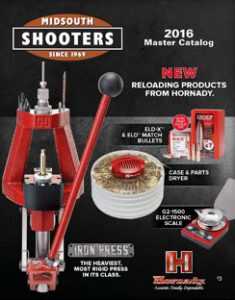 Midsouth Shooters’ GunsAmerica Giveaway
Midsouth Shooters’ GunsAmerica Giveaway
Midsouth Shooters is a great resource for products like the above pieces at great prices. The company is offering you the chance to win one of the items covered in this and future GunsAmerica articles on Midsouth’s products. Just click the link, and gain tons of entries right up until the giveaway scheduled for 11-23-16. In addition, you can receive a free copy of the 240-page Reloading and Shooting Supply catalog from Midsouth Shooters! For more than 45 years, Midsouth Shooters has provided reloaders and shooters top-quality supplies and great prices. Click on the link and sign up to receive your free copy. See why so many shooters across the country shop at Midsouth Shooters.
To enter the Midsouth Shooters’ GunsAmerica Giveaway contest, click this link:
To purchase the products reviewed in this piece, click these links:

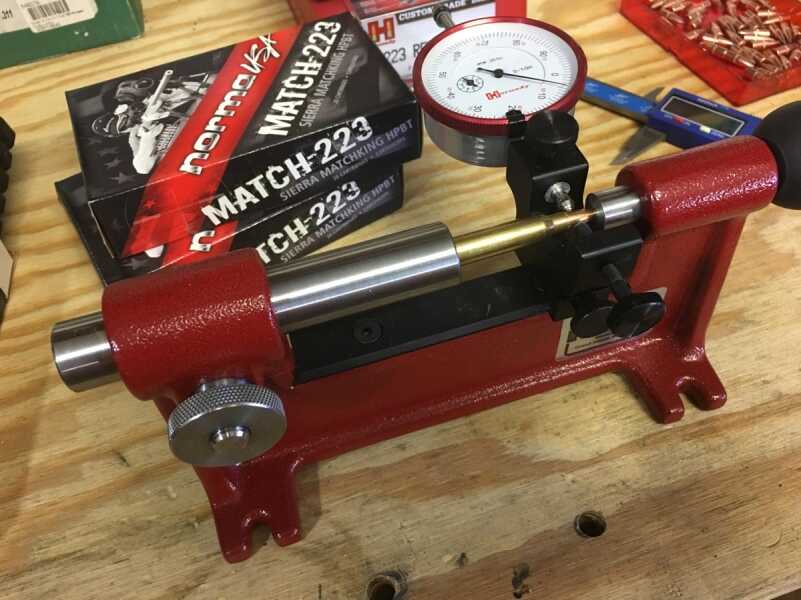

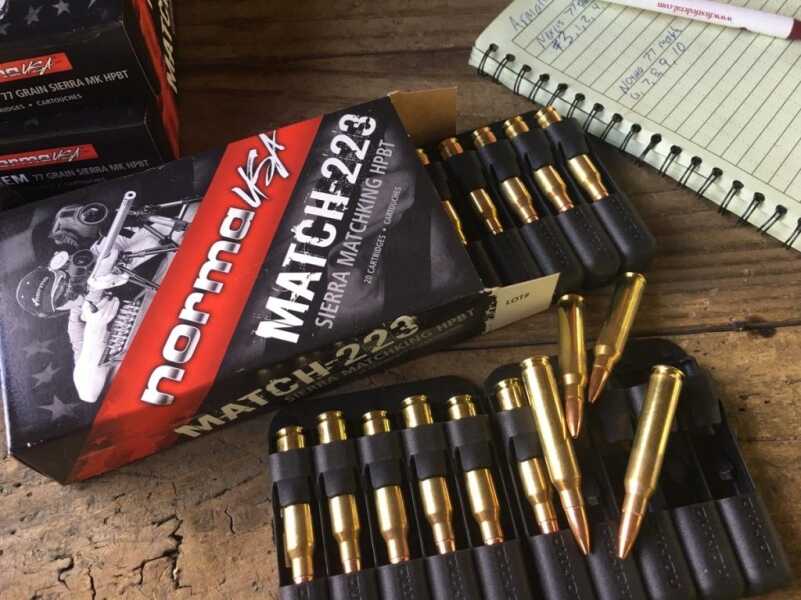
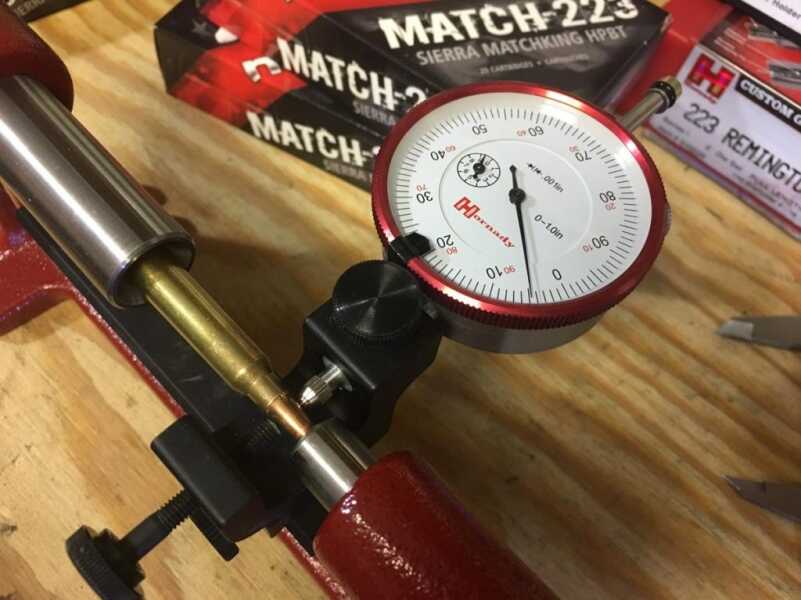
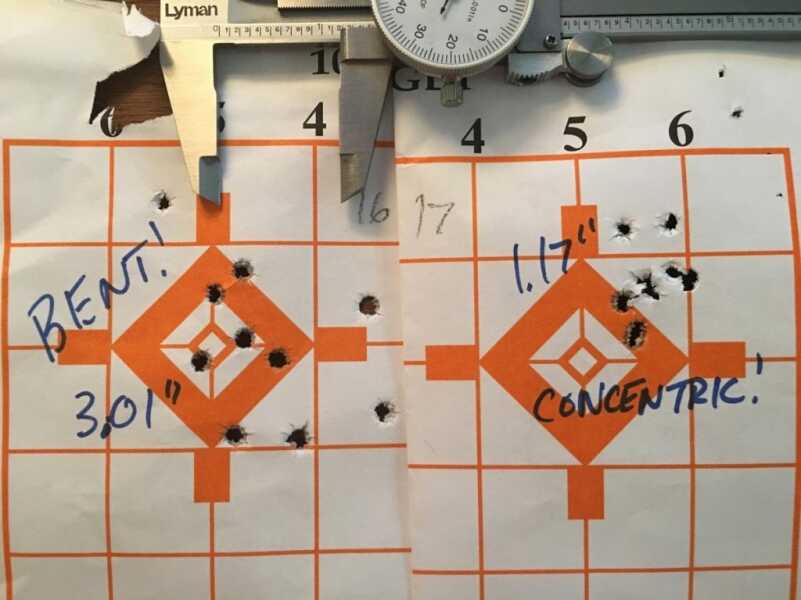
Well this is very interesting info and as the author said there are other variables which effect accuracy and we all agree on that as well. However another test is needed now with presses for hand loaders. What type and which have the overall least amount of “concentricity or least amount of bullet run out”. With so many options out there in the sea of reloading equipment offered if one type, arbor, single stage, turret, or progressive can produce better concentricity or bullet run out then another. And again which Manufactue of “press” works better overall for better “concentricity or bullet run out”. If we knew that then we would also spend less time straightening out our bullets. All replies are welcome
Hello, and good morning.
I’ve just finished your article on “Bullet Concentricity” and I found it to be a good read but it also sparked a few questions.
Being an avid shooter and reloader of personal ammunition I too have wondered about Bullet concentricty.
Having worked in the private sector manufacturing ammunition for both sport and military use for the last 12yrs I am very conscientious of concentrcity but we take it to a whole new level by manipulating and refining concentricty of the bullets “Jacket,” prior to insertion of the “slug” by adjusting a series of punches and dies within our machines.
It’s amazing at how much of an ill fated effect or the number of “flyers” that are produced that don’t group properly just due to the concentricty of the bullets jacket.
With that being said it’s deeper than just a proper seating alignment that aids in the truer accuracies longed for by most shooters. We ultimately have to take into account that after the projectile is refined at the factory level that headspace also plays a part in concentric alignment.
One question I have where your controlled study is concerned is was “ramping” of the cartridge when placed within the chamber via bolt carrier/slide from OUT of the magazine taken into consideration? When cartridges are stacked into the magazine being double or single stacked, fully loaded or partially, does something like that have an effect on the pressure in which they are under when being ramped into the chamber?
Having a poor crimp on the projectile would lead one to believe that simply just chambering the round could throw off any central or, “mathematical alignment” as you put it. Wouldn’t you think that is plausible theory as well?
I’d think this would be especially true where in the AR-15 you have a “Rifle” ramp as well as “M4” ramp variant. Given that the AR/M-16 rifles have double stack mags it would have less resistance when being chambered causing less canting/tilting of the projectile when fed from the mag to the chamber therefore maintaining Bullet seat comcentricty thus improving accuracy according to your theory.
What are your thoughts on this and can you elaborate as to weather your AR had a “Rifle” feed ramp or an “M4” and also if your cartridges had “mouth waterproofing” on them, as well what difference if any having your mags under “full load?” This would also make a substantial difference as to how the projectile maintains its concentricity under pressure of chambering manipulation through the action of the BCG when cycling. Thank you.
Hello Tom. I enjoyed your article, but am puzzled by one aspect. How did you measure run out to a resolution of one ten thousandth, (.0001), with a dial gauge that only measures to the nearest thousandth, (.001)? Did I miss something?
The whole time I was reading this I was wondering if runout and concentricity were interchangeable terms.
Technically, considering the comments above, it seems they are not. Wondering why The device is called a concentricity gauge? Marketing purposes?
You are not checking concentricity but runout. Checking for concentricity you are actually checking the center lines of the case to the bullet. It is impossible to do this with solid object. The Hornady Concentricity Gauge checks runout which is the outer surfaces of the case to the bullet.
I have a background in GD & T (Geometric Dimensioning and Tolerances) take a look at ANSI Y14.5 and you will see what I am talking about
Doesn’t matter what the proper terms are, the process works and the author explained what the process is and he showed the proven results. Nice article, call it what you want.
Terms matter. If you can’t define the problem correctly, it is impossible to arrive at a solution or accurately communicate results. Terms most definitely matter.
That’s correct, we’re checking and adjusting bullet runout, I just literally used the concentricity word as that’s what Hornady names the tool shown here.